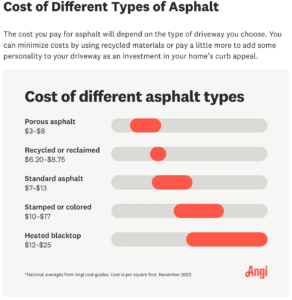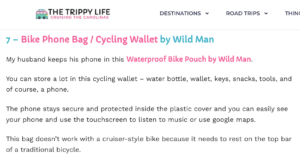Should You Invest In High Domain Authority Links?

Why you shouldn’t buy backlinks from cold emails
There are only a few things in life that you can count on death, taxes, and an absurd amount of “SEO link building experts” spamming your email inbox and LinkedIn private messages with “high DA” links.
There is a general rule in life, the hardest things in life are earned and if it’s easy then it wouldn’t be considered special. It doesn’t matter if you are talking about becoming a billionaire, running a 3-hour marathon, bench pressing 315 lbs, passing the bar exam, becoming a surgeon, etc. those things are hard to do and you have to earn those milestones. If generating high-quality links was easy everyone would be doing it, which is another reason to avoid these spammy cold email link pitches.
Yes, backlinks are important. Yes, these links do have a great metric score when it comes to “Domain Authority” or “Domain Rating”. However, metrics don’t tell the whole story.
Let’s talk about why you should avoid these types of backlinks like the plague.
Why High Domain Authority Doesn’t Equate to High Quality
Let’s talk about quality. I must get about a dozen cold emails and messages on LinkedIn every week offering me “high DA guest blog links”
Does your business want links with high DA (domain authority)? Absolutely. However, you likely do not want these links even though they have a high DA.
Domain Authority is a metric used by various 3rd party SEO softwares such as AHREFS and SEMRush but what that DA doesn’t account for us the part that Google and other search engines really care about the most: relevancy.
At the end of the day Google wants to provide the best possible user experience to all searchers. It is my opinion that they also do not want the top positions in search to automatically go to the business with the most money, which is exactly what would happen if people could just continue to buy links solely based on one metric like Domain Authority.
Here is what Google’s John Mueller said about Domain Authority.
I’m kinda torn. On the one hand, you do not need DA for Google Search. Google doesn’t use it *at all*. If you’d like to level your site up in search, you’d need to focus on something else, or at least use other metrics for it. This is mostly why DA as a metric is frowned upon by many SEOs. For context, I don’t think I’ve ever looked up the DA for a site in the 14 years I’ve been doing this.
What makes a high quality link?
A natural interaction from one page to another. Let’s use this very blog post as an example – it is about link building. If another SEO blog or person enjoyed this content, and they chose to create an article on a similar topic and thought my blog post would add value to their piece they could externally link to this very blog post. Anyone who reads their article and clicks that link to this blog post would have a natural user experience. There wouldn’t be anything forced about the interaction.
On the other hand, if you need DA for something else (sell the site, sell advertising, sell links) I wonder if there’s a way to turn that around into focusing on a more useful metric instead (even something as simple as pageviews could be more useful if you want to sell ads). Or, if it’s really just DA that you want, then I’d look into Moz’s docs & forum since they make the metric.
This is how user experience factors into this whole equation. If you create really amazing content, people will naturally want to link to it.
Ready to take your SEO to the next level?
Now that you have read about SEO on the blog, it’s time to plan your next move. Please book a strategy session, and we can discuss your plan of action.
Stay Away From Bad Linking Neighborhoods
Bad neighborhoods – often times these cold solicitation emails for “high DA links” are on websites that were created for the sole purpose of building and selling links.
Google can spot these types of websites from a mile away and even can track the private blog networks through server c block to identify a specific server or network.
Links that come from bad neighborhoods are not only not helpful but they put your website at risk and can even get your website penalized to the point where they will not show your website in the search results. If you have been penalized, all is not lost, Google penalty recovery is possible.

Avoid Private Blog Networks (PBN)
Private Blog Networks (PBN) are a group of websites that are owned and operated with the sole purpose of selling or generating inbound links. This is something Google’s John Mueller has said plenty about in the past.
“Usually nobody has to leak a PBN, they’re pretty obvious to the appropriate tools & basic scripts.”
— I am John – ⭐ ⭐ LIVE ⭐ ⭐ (@JohnMu) May 14, 2021
How to Identify Private Blog Networks (PBN’s)
Here are some ways to tell if a website was built for the sole purpose of building links.
- No contact information available. No address, phone number of even email address.
- The footer of the website has a link to an SEO company.
- Each post on the blog has “money keyword anchor texts”.
- There is no real theme to the website it’s just random blog post article after random blog post article.
- You can also check the domain itself on a website like majestic.com and see what sort of link profile it has.
Private Blog Network FAQ's
What is a bad link neighborhood?
A bad link neighborhood refers to inbound links that come from websites that are known to sell links to other websites.
What are some signs of a bad link neighborhood?
There is no specific rhyme, reason, or solidified theme for a website’s content. These websites are referred to as PBN or private blog networks.
How to acquire high-quality links?
Create content that is so valuable that other websites are citing your content in their published content. That’s the answer.
There is no shortcut, it is not cheap, it’s an investment and it takes time.
As an SEO consultant, I have been privileged enough to work with and at some of the best SEO agencies in the world on some amazing digital PR campaigns that have generated thousands of actual high-quality and valuable links for many different websites.
One common denominator that each of these world-class digital PR agencies has is the fact they all build long-term linking assets on the organization’s website.
Stay away from guest posts, the other website is going to credit for all of the value that you bring to the table, instead build linking assets that live on your own domain.
What is a long term linkable asset?
A long-term linkable asset is a piece of content that lives on your own website and will generate links organically due to the value it brings. It does not require active pitching (although helpful) because your content becomes a trusted source for people to cite when writing articles.
How to build link-worthy content
People use search engines every day for a variety of reasons but some of the most common reasons people search are to research products, services, etc. The question then becomes, how do you take advantage of searcher’s natural curiosity?
My two personal favorites types of long-term linkable assets are industry surveys and listicles.
Industry Surveys
Find an interesting topic related to your industry, compile all sorts of interesting data, and validate the data. Once, you compile the data you can create really compelling infographics and interactives, write some long-form content that summarizes this data, and then you can pitch these stories to various outlets and journalists so they can take advantage of this new survey. Angi does a great job with these types of survey style pieces of content.

Listicles
Before purchasing a product or service people will start in the upper funnel such as “best product/service” When you look at some of the most popular terms on the internet such as “best product/service in 202x” you often see listicles appear at the top of the search results.
The key to listicles is to provide a unique and personal point of view on each of the products, services or brands you are listing in this content. Google is looking for E-E-A-T which stands for Experience, Expertise, Authoritativeness, and Trustworthiness. Listicles themselves can really let you show off your experience and expertise in a topic by providing key insights on what you are listing.
Here is an example from The Trippy Life who does a great job at injecting experience into the content.

As of the time of this posting, this ranked #1 for “best ebike accessories” and the difference between this article and the ones just below is a first-party tone vs a third-party tone of voice which seems to add more of a human-based opinion from personal experience.
Final Thoughts on Buying High Domain Links
Although inbound links can help you build your E-E-A-T which can help you improve your visibility just remember that high-quality backlinks come from relevancy and not a specific link metric such as Domain Authority.
If you want to improve your E-E-A-T through backlinking then invest in a solid Digital PR strategy. Building quality link is not cheap, it is not easy, which is why when you do acquire good links they are impactful.
If you have purchased these links and you cannot get the seller to remove them, you can always submit a link disavow file in Google Search Console. If you are in need of a link audit, please connect with me.
About The Author

Shane Hampson
Ethical SEO Consultant
Data Driven Marketer. Fantasy Football Champion. Dog Lover. Foodie.
Ready to take your SEO to the next level?
Now that you have read about SEO on the blog, it’s time to plan your next move. Please book a strategy session, and we can discuss your plan of action.
Recent Blog Posts
How to leverage social media for Digital PR
How to use social media to increase your digital PR and link building
Benefits of Digital PR
What are the benefits of Digital PR for link building?
Digital PR: The Future of Link Building
Why Digital PR is the future of SEO friendly link building.



